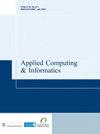基于叠置模糊ARTMAP的乳腺癌检测集成循环模型设计
IF 4.9
Q1 COMPUTER SCIENCE, INFORMATION SYSTEMS
引用次数: 1
摘要
目的及时、准确地发现癌症可以挽救患者的生命。根据世界卫生组织(世卫组织)的资料,乳腺癌在所有癌症中发病率最高,而在死亡率方面,乳腺癌排在第五位。在许多图像处理技术中,某些工作集中在卷积神经网络(cnn)上处理这些图像。然而,深度学习模型还有待探索。设计/方法/方法在这项工作中,基于多元统计的核主成分分析(KPCA)用于基本特征。KPCA同时有助于数据去噪。这些特征通过由三个基本模型组成的异构集成模型进行处理。基本模型包括递归神经网络(RNN)、长短期记忆(LSTM)和门控递归单元(GRU)。这些基础学习器的结果被输入到模糊自适应共振理论映射(ARTMAP)模型中进行决策,如果满足获胜标准,则将节点添加到F_2 - a层,使ARTMAP模型更具鲁棒性。研究结果使用Kaggle公开提供的乳腺组织病理学图像数据集验证了所提出的模型。该模型的训练准确率为99.36%,验证准确率为98.72%。该模型在各个方面都进行了数据处理,即图像去噪以减少数据冗余,通过集成学习进行训练以提供比单一模型更高的结果。最后通过模糊ARTMAP模型进行分类,该模型根据性能控制节点数量,实现鲁棒准确的分类。研究局限/启示医学应用领域的研究是一种持续的方法。为了更好的分类,更先进的算法正在开发中。尽管如此,从性能、实用性和成本效率的角度来看,这些模型在未来仍有很大的发展空间。此外,可以选择具有不同组合和特征的集成模型。对于所提出的模型,只能验证信号而不是图像。实验分析表明,该模型的性能得到了改善。该方法需要用实际模型进行验证。并对其实时性和成本效益进行了实际实施。原创性/价值提出的模型用于去噪和减少数据冗余,以便使用KPCA进行特征选择。采用RNN、LSTM和GRU作为基本分类器设计的异构集成模型进行训练和分类,提供比单一模型更高的结果。采用自适应模糊映射模型,使最终的分类更加准确。本文分析了将这些方法结合到一个单一模型中的有效性。本文章由计算机程序翻译,如有差异,请以英文原文为准。
Design of ensemble recurrent model with stacked fuzzy ARTMAP for breast cancer detection
PurposeIn time and accurate detection of cancer can save the life of the person affected. According to the World Health Organization (WHO), breast cancer occupies the most frequent incidence among all the cancers whereas breast cancer takes fifth place in the case of mortality numbers. Out of many image processing techniques, certain works have focused on convolutional neural networks (CNNs) for processing these images. However, deep learning models are to be explored well.Design/methodology/approachIn this work, multivariate statistics-based kernel principal component analysis (KPCA) is used for essential features. KPCA is simultaneously helpful for denoising the data. These features are processed through a heterogeneous ensemble model that consists of three base models. The base models comprise recurrent neural network (RNN), long short-term memory (LSTM) and gated recurrent unit (GRU). The outcomes of these base learners are fed to fuzzy adaptive resonance theory mapping (ARTMAP) model for decision making as the nodes are added to the F_2ˆa layer if the winning criteria are fulfilled that makes the ARTMAP model more robust.FindingsThe proposed model is verified using breast histopathology image dataset publicly available at Kaggle. The model provides 99.36% training accuracy and 98.72% validation accuracy. The proposed model utilizes data processing in all aspects, i.e. image denoising to reduce the data redundancy, training by ensemble learning to provide higher results than that of single models. The final classification by a fuzzy ARTMAP model that controls the number of nodes depending upon the performance makes robust accurate classification.Research limitations/implicationsResearch in the field of medical applications is an ongoing method. More advanced algorithms are being developed for better classification. Still, the scope is there to design the models in terms of better performance, practicability and cost efficiency in the future. Also, the ensemble models may be chosen with different combinations and characteristics. Only signal instead of images may be verified for this proposed model. Experimental analysis shows the improved performance of the proposed model. This method needs to be verified using practical models. Also, the practical implementation will be carried out for its real-time performance and cost efficiency.Originality/valueThe proposed model is utilized for denoising and to reduce the data redundancy so that the feature selection is done using KPCA. Training and classification are performed using heterogeneous ensemble model designed using RNN, LSTM and GRU as base classifiers to provide higher results than that of single models. Use of adaptive fuzzy mapping model makes the final classification accurate. The effectiveness of combining these methods to a single model is analyzed in this work.
求助全文
通过发布文献求助,成功后即可免费获取论文全文。
去求助
来源期刊

Applied Computing and Informatics
Computer Science-Information Systems
CiteScore
12.20
自引率
0.00%
发文量
0
审稿时长
39 weeks
期刊介绍:
Applied Computing and Informatics aims to be timely in disseminating leading-edge knowledge to researchers, practitioners and academics whose interest is in the latest developments in applied computing and information systems concepts, strategies, practices, tools and technologies. In particular, the journal encourages research studies that have significant contributions to make to the continuous development and improvement of IT practices in the Kingdom of Saudi Arabia and other countries. By doing so, the journal attempts to bridge the gap between the academic and industrial community, and therefore, welcomes theoretically grounded, methodologically sound research studies that address various IT-related problems and innovations of an applied nature. The journal will serve as a forum for practitioners, researchers, managers and IT policy makers to share their knowledge and experience in the design, development, implementation, management and evaluation of various IT applications. Contributions may deal with, but are not limited to: • Internet and E-Commerce Architecture, Infrastructure, Models, Deployment Strategies and Methodologies. • E-Business and E-Government Adoption. • Mobile Commerce and their Applications. • Applied Telecommunication Networks. • Software Engineering Approaches, Methodologies, Techniques, and Tools. • Applied Data Mining and Warehousing. • Information Strategic Planning and Recourse Management. • Applied Wireless Computing. • Enterprise Resource Planning Systems. • IT Education. • Societal, Cultural, and Ethical Issues of IT. • Policy, Legal and Global Issues of IT. • Enterprise Database Technology.
 求助内容:
求助内容: 应助结果提醒方式:
应助结果提醒方式:


